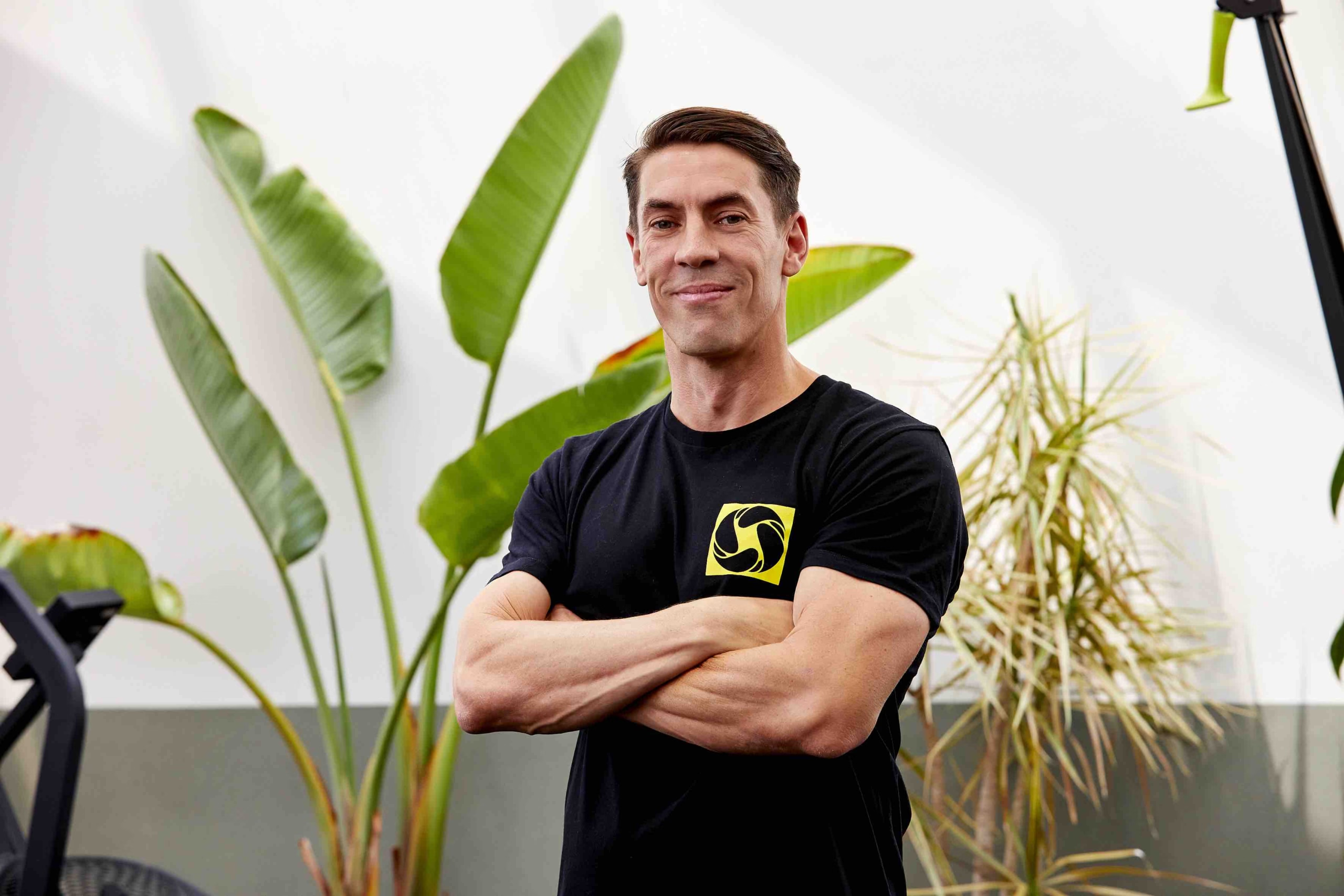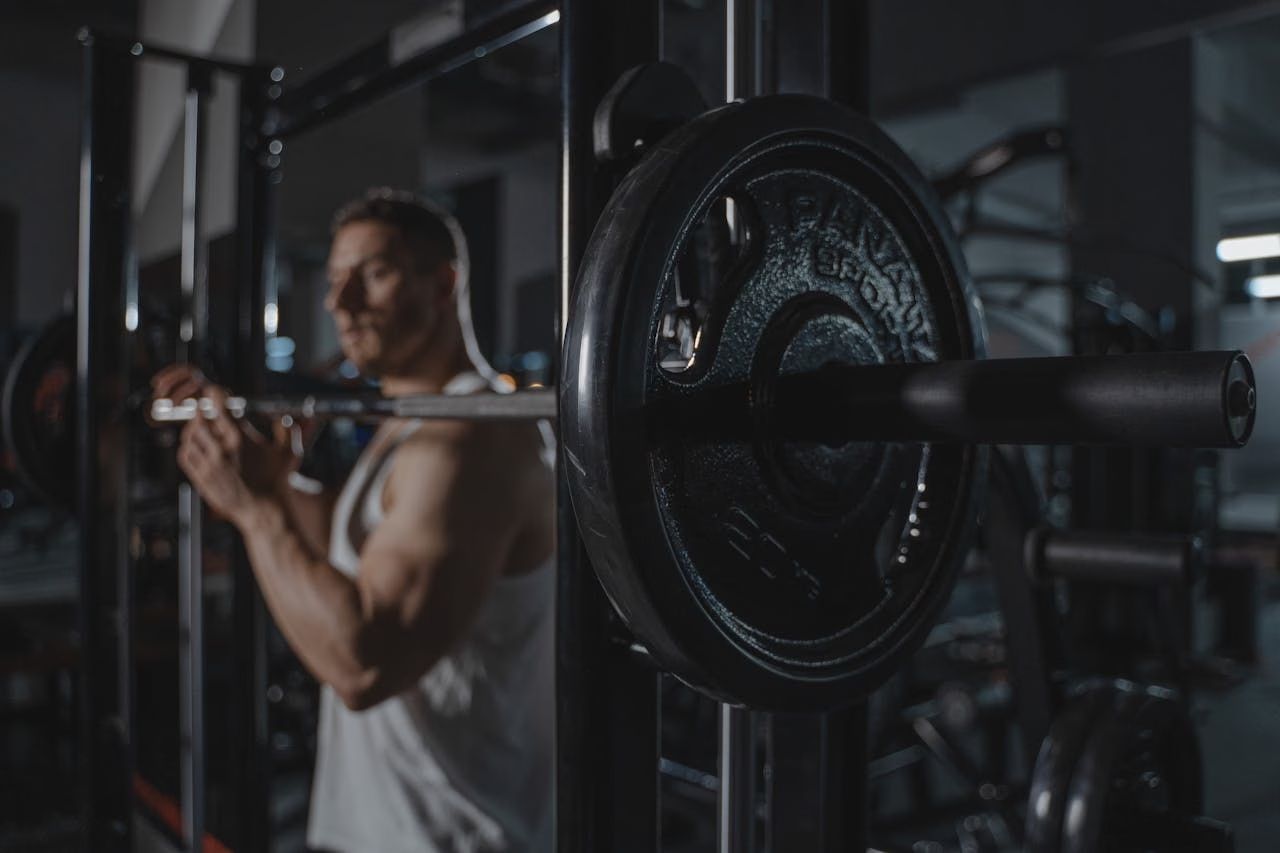When you cross the threshold into the holy place that is the gym, you probably get to your usual rituals right away—and that’s fine. But here’s the thing: By charging into a workout without the right ramp-up, you might be putting yourself on the fast track to training purgatory.
So we asked Matthew Ibrahim, a strength coach at Underground Strength Training and a licensed manual therapist at Physical Therapy & Wellness, to point out some of the worst lifting mistakes you could be making. Study up to protect your health and keep your strength and muscle gains steadily improving.
1. You don’t clock enough sleep the night before
Every night you plug in your electronics to recharge, right? Your body needs time to recuperate, too. Recovery is just as integral to the training process as your workouts. Without enough quality sleep, you’ll be hard-pressed to have enough energy for a successful workout, reset your central nervous system (responsible for triggering muscle contractions, reaction time, and response to pain), or get your hormones regulated (like cortisol down and testosterone up). When your body doesn’t have the sleep time to recharge, then your muscle growth suffers and you increase your risk of sloppy form, overtraining, and injury.
“Most people aim for the golden rule of eight hours of sleep each night; but I’m happy with people getting at least six hours of quality sleep, simply because everyone has different schedules and priorities,” Ibrahim says. The main focus is quality sleep; six solid hours of restful sleep always beats eight hours of shoddy shuteye.”
To optimise your sleep, make sure:
– Your room is in complete darkness (no lights)
– The temperature is generally cool and not hot or humid (about 67 degrees Fahrenheit)
– The environment is consistent (no sounds or interruptions)
2. You deprive your body of water
“Your body is comprised of about two-thirds water,” Ibrahim says, which clues you into how important it is for basic functions. Being hydrated keeps your brain and muscles firing optimally. If you’re dehydrated, you fatigue faster, you can experience muscle cramping, and can easily become lightheaded.
That doesn’t mean you should down a gallon before your workout, though. If you inundate your body, it’ll go right through you, so be sure to drink water throughout the day for optimal results, Ibrahim says. “As a general rule of thumb, you want to drink enough water to the point where your urine closely resembles the colour of lemonade (not too dark of a yellow and not too clear; right in the middle),” he adds.
3. You eat way too much right before the workout
“Some people can train on an empty stomach (fasted state) or after eating a small snack, like a scoop of peanut butter or half a banana,” Ibrahim says. “On the contrary, other folks do better by consuming a regular-sized meal prior to training. It’s the end of the spectrum—eating way too much—that causes digestive problems and decreases performance output.”
When you lift on a stuffed stomach, you’re more apt to suffer from gas, acid reflux, and bloating. Avoid anything high in fibre an hour before you lift to limit gas; avoid dairy and/or eating too much to beat belly bloat; and skip spicy or high-acidity foods to lower your odds of acid reflux and indigestion.
“Find what foods work best for you—a small snack, a regular-sized meal, or even lifting in a fasted state—and be sure to remain consistent for the best results in your training,” Ibrahim says. (Here’s how to prevent 7 common stomach issues during a workout.)
4. You don’t mentally prepare yourself
If you’re smashed after your 9-5, then you drag yourself to the gym, you need to take the time to clear your head of distractions (that includes ditching your phone), go over today’s goal (the logistics of your workout), and get ready to engage your mind-body connection.
“The most important thing to do before working out—whether it’s first thing in the morning or later in the evening after work—is focus on the task at hand,” Ibrahim adds. “Zero in on your body, how you feel, and prepare yourself, mentally, for what you’re about to do in your workout,” he adds. “Readiness is key for high-level performance.”
5. You skip the warmup
Yes, we make a point to tell you in nearly every training story just how important warmups are to your success and longevity in the gym. And we’ll continue to do so until you take it seriously and give your body the proper time, drills, and exercises it needs before moving some heavy metal.
“Your body needs to know what it’s about to get into,” Ibrahim says. “You need to get the blood flowing, increase the core temperature of your body, and get your central nervous system (CNS) prepared,” he adds. “Jumping right into training without a proper warmup doesn’t bode well for your success.”
You want to focus on a proper joint-by-joint warmup that sets the foundation for your routine. That means hopping on a bike for five minutes isn’t going to cut it. (If anything, you’ll hurt your performance.) Try our ultimate warmup for heavy lifting—it’ll prep your muscles and warm up each major joint through fluid movement patterns.
6. You’re not performing warmup lift sets
While it can take a lot of time to warm up your body for really big moves, itt takes even more time to recover when you slip a disc in your spine. “You must build up to your top sets of heavy weights where near-maximal and maximal strength is needed,” Ibrahim says.
Squatting with just the bar, for example, sets the precedence for good form and technique. “This helps prepare your body to accept heavier loads, properly groove the movement pattern, and act as a way to amass volume,” he adds.
7. You immediately strap on a lifting belt
If you religiously strap on a weight belt before even routine squats and deadlifts, you could you doing your body a disservice. Belts are totally fine—and often recommended—on your heaviest lifts, of course. But if you’re using them all the time, then you could be depriving your back and abs of the normal loads that force them to operate and brace your body throughout the movement.
Save the weight belt for your heaviest sets, and practice strengthening your lats, abs, obliques, lower back, and glutes, so you protect your spine (the right way).
8. You’re doing cardio workouts before you lift
Cardio has a time and place in your routine. But if your primary goal is to gain muscle, then you should probably hit the weights before you race through any cardio intervals.
For muscle hypertrophy—aka the training method of developing a larger musculature—your best bet is resistance training, then high-intensity interval training sprints. Jogging for half an hour isn’t going to help you, because steady-state aerobic training can elevate cortisol, which can result in inflammation and diminished lean muscle mass.
Again: You still need to warm up before a lifting workout (see item 6 above), and the treadmill can be part of that. But don’t turn a quick heart racer into a death march, or it could harm your lifting later. Here’s how to structure your workout based on whether you’re an endurance athlete or want to put on muscle.
9. You’re wearing ultra-cushioned running shoes
Most guys want one pair of shoes that do it all—take them from a boot camp workout to a speed workout on the track, then a WOD to a traditional lifting session. The result? You see a lot of people wearing running shoes to the gym.
Of course, if your running shoes are minimalist or have very little cushioning, then you’re probably fine. But if you’ve got an inch of pillowy foam under your feet, or an outsole/midsole that excessively flexes to provide better comfort during running, it’s going to make it more difficult to generate force and stay balanced during lifts—especially if you’re under a lot of weight. You want hard-bottomed shoes specific to lifting weights.




